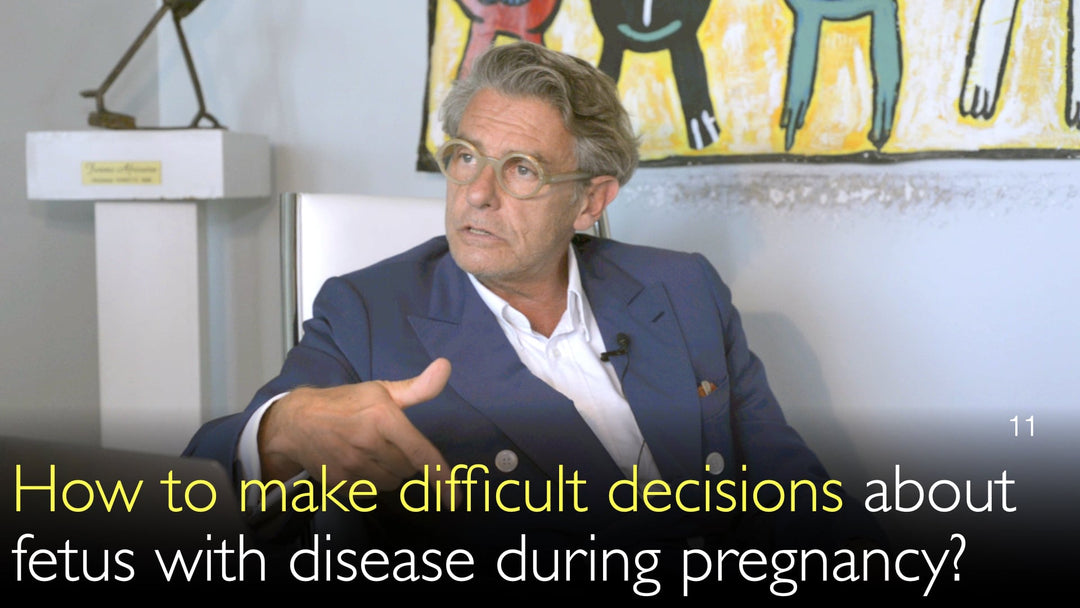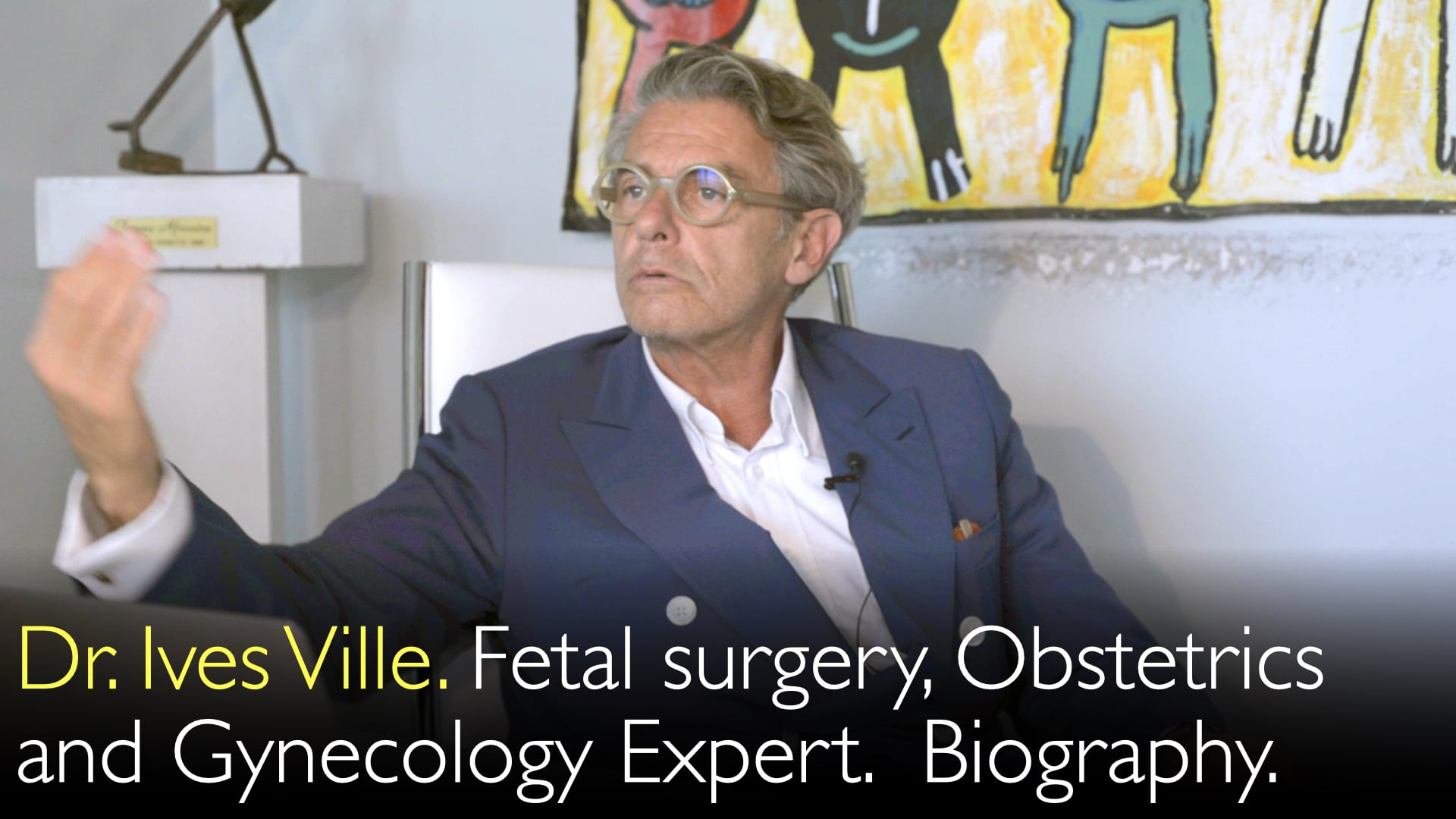מומחה מוביל ברפואת העובר, ד"ר איב ויל, MD, מסביר כיצד אבחונים עובריים מורכבים יוצרים החלטות הריון קשות. הוא מפרט מקרה קליני של היצרות קריטית של אבי העורקים העוברי. אפשרויות הטיפול כוללות התערבות תוך־רחמית עם סיכונים משמעותיים. ד"ר איב ויל, MD, מדגיש את החשיבות של מתן מידע ברוי ותמיכה בבחירה האימהית. הוא דן בגורמים האישיים העמוקים המשפיעים על החלטתה הסופית של המטופלת.
ניווט באבחונים עובריים מורכבים ואפשרויות טיפול במהלך ההריון
קפיצה לפרק
- הדילמה של היצרות מסתם אבי העורקים העוברית
- סיכוני הטיפול התוך-רחמי
- גורמים בהחלטת המטופלת
- תפקיד הרופא
- השפעות פסיכולוגיות על הבחירה
- תמלול מלא
הדילמה של היצרות מסתם אבי העורקים העוברית
ד"ר איב ויל, MD, מציג מקרה קליני מורכב של היצרות קריטית של מסתם אבי העורקים העוברי. מצב לב חמור זה מאובחן באמצעות אולטרסאונד במהלך ההריון. האבחון חושף מסתם אבי העורקים צר מאוד, המגביל את זרימת הדם. מגבלה זו מונעת מהחדר השמאלי להתפתח כראוי, מצב הידוע כתסמונת לב שמאלי מנוון. תינוק הנולד עם תסמונת זו עתיד לעבור מספר ניתוחים ואיכות חיים מוגבלת משמעותית. ד"ר אנטון טיטוב, MD דן בהשלכות העמוקות של אבחון זה עם ד"ר איב ויל, MD.
סיכונים ותוצאות של טיפול תוך-רחמי
ד"ר איב ויל, MD, מתאר התערבות עוברית אפשרית עבור היצרות קריטית של מסתם אבי העורקים. ההליך כולל החדרת מחט ללב העובר בהנחיית אולטרסאונד. קטטר בלון משמש להרחבת המסתם הצר, בדומה לטכניקות המשמשות בקרדיולוגיה למבוגרים. התערבות בסיכון גבוה זה נושאת סיכון מיידי של 15% למות העובר. שיעור ההצלחה להשגת מחזור דם דו-חדרי הוא רק כ-50%, מה שהופך את הסתברות התוצאה החיובית הכוללת לכ-35%. ד"ר איב ויל, MD, מסביר שגם עם הליך מוצלח, סביר שהתינוק יזדקק לטיפול נוסף לאחר הלידה.
גורמים בהחלטת המטופלת
ד"ר איב ויל, MD, מדגיש כיצד מטופלות מעבדות את אותה אינפורמציה רפואית באופן שונה. חלק מהנשים מתמקדות בסיכון התמותה של 15% ובאי-הוודאות של ההצלחה, ובוחרות להפסיק את ההריון. אחרות מוכנות לקבל את הסיכונים הגבוהים, ורוצות "לעשות כל מה שאפשר" עבור התינוק שלהן, גם עם הסתברות נמוכה לתוצאה טובה. קבוצה שלישית עשויה לבחור באי-התערבות, ולהניח לטבע לעשות את שלו. ד"ר אנטון טיטוב, MD חוקר תגובות מגוונות אלה עם המומחה לרפואת העובר, ומציין שאין דרך נכונה אחת.
תפקיד הרופא בתמיכה בבחירה
ד"ר איב ויל, MD, מדגיש את התפקיד הלא-שיפוטי של הצוות הרפואי. חובתו העיקרית של הרופא היא לוודא שהמטופלות מבינות fully את האבחון, כל אפשרויות הטיפול, והסיכונים והיתרונות הנלווים. זה כרוך בתקשורת clear ומתן זמן למטופלות לעכל את הבשורה המזעזעת. ההחלטה הסופית תמיד נשארת בידי האישה ההרה, שכן זהו הריונה והילד הפוטנציאלי שלה. גישתו של ד"ר ויל היא לספק תמיכה ולפעול לפי הנחיית המטופלת ללא הטלת ערכים אישיים.
השפעות פסיכולוגיות ואישיות על הבחירה
ד"ר איב ויל, MD, מסביר שהחלטות never נעשות בוואקום. גורמים אישיים עמוקים מהיסטוריית חיי המטופלת, מערכות היחסים שלה, והילדות שלה often מעצבים את בחירתה. לדוגמה, אישה whose הקריירה שלה תלויה במראה החיצוני שלה עשויה להתקשות more עם אבחון של שסע פנים עוברי. Conversely, אישה for whom הריון זה הוא ההזדמנות האחרונה שלה להביא ילד may לקבל סיכונים גדולים יותר. ד"ר אנטון טיטוב, MD וד"ר ויל conclude שהבנת גורמים אנושיים ייחודיים אלה היא essential לטיפול compassion, שכן אין דפוס universal להחלטות אישיות עמוקות אלה.
תמלול מלא
ד"ר אנטון טיטוב, MD: האם יש סיפור מטופלת שתוכל לדון בו שימחיש חלק מהנושאים והשיחות היום? אולי דוגמה או מיזוג של מקרים קליניים מהפרקטיקה שלך?
ד"ר איב ויל, MD: אני חושב שאם אתה מחפש את הדילמות האלה, חלקן very abrupt וvery schematic: מחלה that is curable. אישה אחת would תבקש הפסקת הריון still because she's not willing to take whatever risk there is, and אישה אחרת would רוצה להמשיך עם ההריון, irrespective.
For a disease that is easily treatable, like אנמיה עוברית, you can encounter that. But if those people have to go over the shock of the announcement of the problem, you leave time, and you give information, you answer their questions. There's no reason why those people would then go and be insensible.
Most people are sensible, and you work for the majority of people. When people have a psychological or psychiatric problem, that's different, but then it becomes a maternal problem—an indication potentially of terminating or not the pregnancy, okay?
If you are dealing with sensible people, you shouldn't encounter that many of those stories at all. But if the treatment is uncertain, and I pick on another example, which is not fetoscopy, which is ultrasound-guided: say, the aorta of the fetus, the aortic valve is sick. You got critical aortic stenosis.
Critical aortic stenosis in early pregnancy, if this is severe, and the passage for the blood is minimal, the left ventricle will not develop. It will be hypoplastic left heart, and the baby will be born with one ventricle only, which then leads to several surgeries and nothing really like a cure. It's a life of surgeries and a life expectancy that is neither long nor comfortable.
So when you make this diagnosis—the diagnosis of fetal aortic stenosis is completely amenable to ultrasound—the options are: leave nature to have its course, terminate the pregnancy, or try to treat in utero.
What we do in utero, under ultrasound, is we put the needle in the heart, in the left ventricle. And we catheterize the stenosis of the aorta, of the valve. And we blow a balloon—the same balloons the cardiologists use for dilating coronary arteries. So you dilate the valve, and then you remove the needle.
So, one: this procedure is risky. The risk of death is about 15% straightaway. Two: this is uncertain in results because if you succeed in dilating the valve, you don't know if the dilatation will be enough for the blood to pass through and the ventricle to grow. So you need to allow several weeks after the procedure.
And with this, you can have the same clinical picture or ultrasound picture, different conversations, and completely different options. Some women would say, "Sorry, you told me that the success rate was 50%, the risk of the fetus to die from the procedure is 15%. So altogether, I'm left with a 35% favorable outcome, and the baby might need a dilatation after birth, and we hope that will be enough. I'm not taking that."
Another woman would say, "You've told me that this ventricle was already fibrotic, that the risk of death is 15%, and the risk of success is 10–20%. But I want to do everything I can for this baby, and if the baby dies afterward, right?" And some people would say, "Oh, 15% risk of death, and I'd rather do nothing," even if the probability that this heart can be put on its own feet—so to speak, with two ventricles—is 5%.
So again, this is a job for schizophrenic people. And you don't have to be judgmental. Just explain. Make sure people have understood everything and just follow the woman. It's her pregnancy, and that's potentially her baby or not.
ד"ר אנטון טיטוב, MD: Can you categorize the people, your patients—pregnant women—who are more likely to take these very diverse, potentially three decisions? Are there any trends? Is there any system that you see? Or could it be a complete surprise coming out from any type of person? Are there any patterns that you see?
ד"ר איב ויל, MD: Patterns? I wouldn't describe it as a pattern. But if you dig deep enough into their life, their history, their childhood, their relationship, you can find the origin of that decision.
Sometimes it's easy. You know, if you take—I don't know, it's a caricature again—but you have a fetus with a facial cleft, and this woman is a model. Why has she become a model? What was the pressure on her? Can she cope with a fetus with a facial cleft? Probably, generally. But it doesn't mean individually.
But generally, that will be more difficult for this woman than for a woman who has no outside influence on her behavior and appearance, no pressure, and for whom that baby will be the last chance to have a baby, for example.
You can't have a pattern. You have factors, always somewhere—deep enough, sometimes very, very easy to understand, sometimes very deep—that would build their decision. And that's the definition of a human being.





